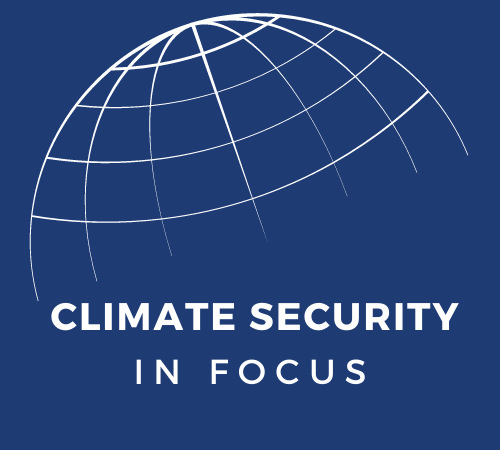
Electrification and Critical Minerals
The U.S. transportation sector is in the midst of transformative change. The accelerating trends toward electrification will create a significant shift in the market that has profound implications for both the electric vehicle (EV) value chain and its entire production ecosystem. As such, there are important strategic considerations for the U.S. to consider, primarily for battery production and access to critical minerals.
Demand for electric vehicles (EVs) continues to grow, and so has the demand for more efficient and effective batteries. High-capacity batteries are essential for continued economic growth, but they contain critical minerals like lithium, cobalt, copper, nickel, and other rare earth elements (REE) that are not routinely sourced in the U.S.. Since REEs are used in a number of domestic products ranging from batteries to liquid crystal displays (LCDs), and light emitting diodes (LEDs), and in a host of military tools, systems, and communications platforms, maintaining the supply chain for these resources is a critical national security issue.
The precariousness of the U.S. critical mineral vulnerability has been well documented. China continues to be the world’s largest producer, consumer, and exporter of REE. It controls more than 90 percent of the global supply base of REE, giving China an outsized role in the electrification transition. Between 2014 and 2017, the U.S. imported 80 percent of its rare earth minerals from China. And in 2018, the U.S. Department of Interior (DOI) published a list of 35 critical mineral commodities. Alarmingly, of the 35, the U.S. relies on imports for 14, and is more than 50 percent import-reliant for 31.
Many nations have already recognized critical mineral supply as a significant issue and factored it into government policy. Both China and the European Union have developed and deployed ambitious government-led industrial policies across the battery supply chain. Recognizing the challenge, in 2019, Florida Senator Marco Rubio highlighted access to REEs as critical U.S. national security issue and called for a 21st-century pro-American industrial policy stating “the decision to observe when the market advances the common good shouldn’t just be limited to those instances in which its determination runs contrary to our national defense.”
Over the past six years, the U.S. federal government has undertaken a number of actions to facilitate critical mineral innovation. In December 2017, the Trump Administration issued Executive Order (E.O.) 13817, which compelled various U.S. federal government agencies to take action to ensure secure and reliable supplies of critical minerals. In response, the Department of Commerce released A Federal Strategy to Ensure Secure and Reliable Supplies of Critical Minerals to “improve the ability of the advanced technology, industrial, and defense manufacturing sectors that use critical minerals to adapt, reduce risks, and support economic security, all of which will reduce the Nation’s vulnerability to critical mineral supply disruptions. And in September 2020, the Trump Administration issued E.O 13953 to address the threat to the domestic supply chain from reliance on critical minerals from foreign adversaries. Congress also passed the Energy Act of 2020, which was the first comprehensive update to U.S. energy policy in approximately 13 years. In the intervening two years, a litany of energy related activities, strategies, and programs have been developed to increase REE related innovation.
For example, the Department of Energy’s (DoE) Critical Minerals and Materials Strategy lists significant investments designed to diversify supplies, develop substitutes, and improve reuse and recycling. Likewise, the Department of Defense (DoD) has created the Strategic Materials Assessment and Risk Topography (SMART) digital mapping tool to map upstream tiers of the strategic and critical materials sector. The Biden Administration has advanced the cause further by issuing E.O 14017 on America’s Supply Chains and subsequently compiled a supply chain assessment, which serves as comprehensive review of critical risks, vulnerabilities, and strategies for domestic supply chain resilience.
Like most transitions, there will continue to be challenges, but collaboration with U.S. allies and partners is facilitating broad advances across the industry. Partnership with key allies designed to share knowledge, advance innovation, and secure supply chains for critical minerals and commodities is already underway. The U.S. has a longstanding bilateral relationship with Canada, which was most recently formalized in the Canada-US Joint Action Plan on Critical Minerals Collaboration. Likewise, the U.S. is also partnering with Australia on a similar working group, and the U.S. Geological Survey (USGS), Geoscience Australia, and the Geological Survey of Canada are coordinating research and mapping projects primarily through the Critical Minerals Mapping Initiative, which is designed to foster information sharing, coordination, and ultimately enhance collective national security. Additional international collaboration is sure to follow, as a group of Senators recently introduced the Quad Critical Minerals Partnership Act to “leverage existing trade partnerships with Australia, India, and Japan to reduce the U.S. dependence on China for critical mineral supplies.”
The need to position the U.S. as an industry leader and enhance economic competitiveness more broadly is clear. Earlier this year, USGS updated the critical mineral list to include 50 commodities, so the work to secure a critical mineral supply and provide robust resources for the transition to electricity is far from complete. As such, the Biden Administration’s predicted invoking of the Defense Production Act to encourage domestic production of EV batteries and procurement of needed mineral inputs is a rare and welcome point of bipartisan alignment.
Climate Security in Focus is a blog series dedicated to exploring key elements of climate security that impact American interests both at home and abroad. The series aims to examine specific aspects of climate security issues in order to better understand climate policy challenges, facilitate conversation, and generate ideas.





